|
|
de Havilland Canada
de Havilland Aircraft of Canada Ltd (DHC) was an aircraft manufacturer with facilities based in what is now the Downsview area of Toronto, Ontario, Canada. The original home of DHC was the home of the Canadian Air & Space Museum located in what is now Downsview Park.
The aircraft company was created in 1928 by the British de Havilland Aircraft Company to build Moth aircraft for the training of Canadian airmen. Subsequently, after the Second World War, it designed and produced indigenous designs.
In the early 1980s, the Government of Canada privatized DHC and in 1986 sold the aircraft company to then Seattle-based Boeing. The government claimed to have guarantees from Boeing not to discontinue any product lines, but shortly thereafter, Boeing discontinued both the successful Twin Otter and the Dash 7. The jigs and specialised equipment for their manufacture were destroyed. Boeing was in heavy competition with Airbus for a series of new airliners for Air Canada, at that time a Canadian Crown corporation. Boeing used the DHC purchase to further strengthen their commitment to their shared production contracts. The contract was particularly contentious. When Air Canada announced that Airbus had won the contract in 1988, amid claims of bribery, Boeing immediately put DHC up for sale, placing the company in jeopardy. DHC was eventually acquired by Montreal-based Bombardier Aerospace in 1992.
DHC-1 Chipmunk | DHC-2 Beaver |
DHC-3 Otter
de Havilland Canada DHC-1 Chipmunk
The de Havilland Canada DHC-1 Chipmunk is a tandem, two-seat, single-engined primary trainer aircraft. It was developed shortly after the Second World War and sold heavily throughout the immediate post-war years, being typically employed as a replacement for the de Havilland Tiger Moth biplane.
The Chipmunk holds the distinction of being the first postwar aviation project conducted by de Havilland Canada. It performed its maiden flight on 22 May 1946 and was introduced to operational service that same year. The type was slowly phased out of service from the late 1950s onwards, although in the ab initio basic training role, this didn't actually occur within the Royal Air Force until 1996, having finally been replaced by the SA Bulldog.
Bombardier Inc. sold the rights to the out-of-production aircraft (DHC-1 to DHC-7) to Viking Air Ltd. of Sidney, British Columbia, in May 2005.
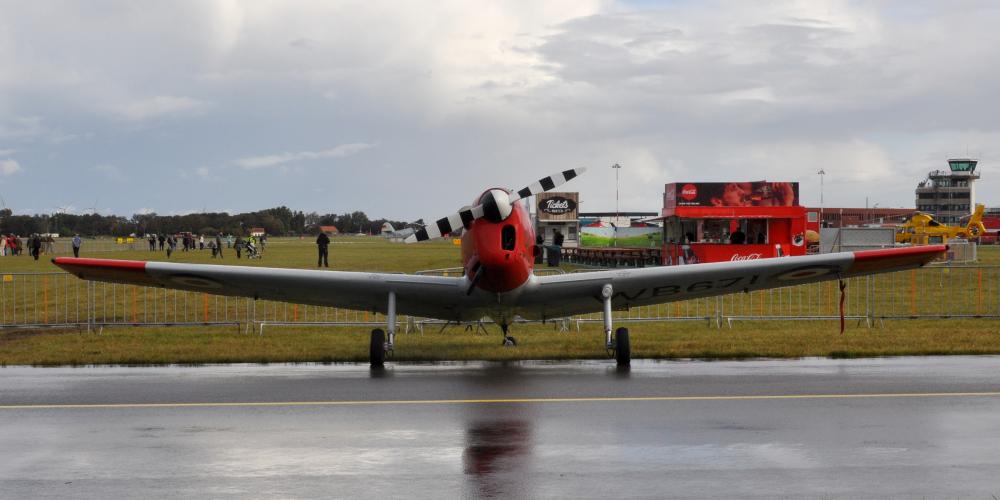
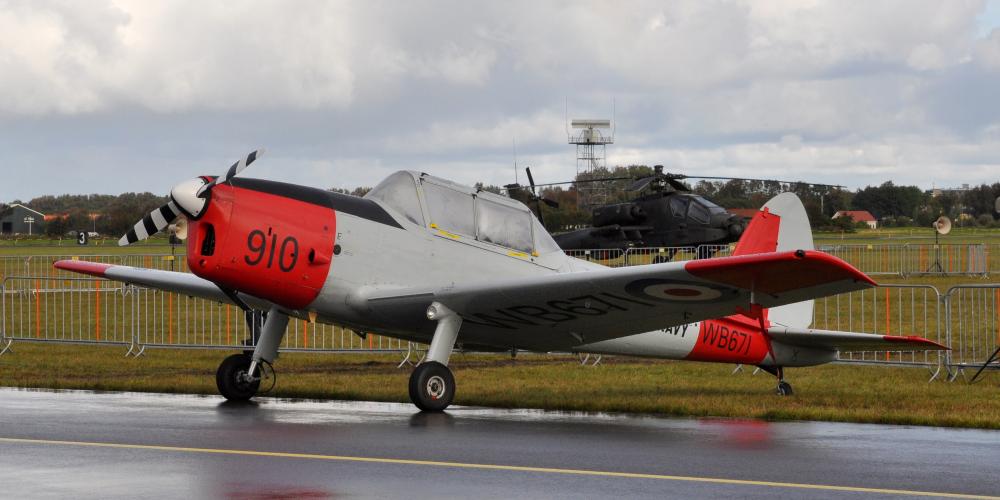
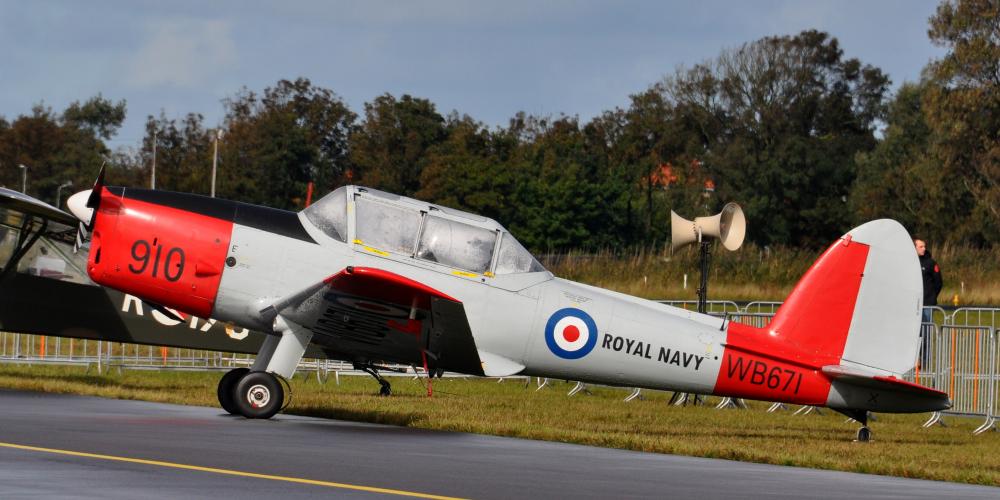
de Havilland Canada DHC-1 Chipmunk T.10, registration G-BWTG, built 1950, serial number C1-0119
Den Helder Airport (Maritiem Vliegkamp De Kooy) (DHR/EHKD), Den Helder, Netherlands, 16 September 2017
DHC-1 Chipmunk | DHC-2 Beaver |
DHC-3 Otter
de Havilland Canada DHC-2 Beaver
The de Havilland Canada DHC-2 Beaver is a single-engined high-wing propeller-driven short takeoff and landing (STOL) aircraft developed and manufactured by de Havilland Canada. It has been primarily operated as a bush plane and has been used for a wide variety of utility roles, such as cargo and passenger hauling, aerial application (crop dusting and aerial topdressing), and civil aviation duties.
The designation U-6A was from 1962 the redesignated L-20A for US Army aircraft.
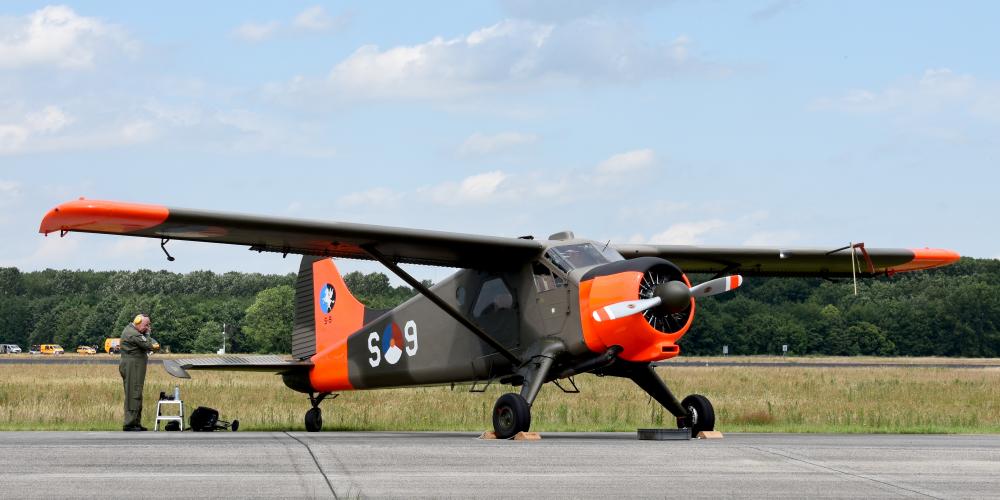
de Havilland Canada DHC-2 Beaver Mk1, registration PH-DHC, built ????, serial number 956
Vliegbasis Volkel (UDE/EHVK), Uden, Netherlands, 14 June 2019
DHC-1 Chipmunk | DHC-2 Beaver |
DHC-3 Otter
de Havilland Canada DHC-3 Otter
The de Havilland Canada DHC-3 Otter is a single-engined, high-wing, propeller-driven, short take-off and landing (STOL) aircraft developed by de Havilland Canada. It was conceived to be capable of performing the same roles as the earlier and highly successful Beaver, including as a bush plane, but is overall a larger aircraft.
The rugged single-engined, high-wing, propeller-driven DHC-3 Otter was conceived in January 1951 by de Havilland Canada as a larger, more powerful version of its highly successful DHC2 Beaver STOL utility transport. The Otter received Canadian certification in November 1952 and entered production shortly thereafter. Using the same overall configuration as the Beaver, the new, much heavier design incorporated a longer fuselage, greater-span wing, and cruciform tail. Seating in the main cabin expanded from six to 10 or 11. Power was supplied by a 450-kW (600 hp) Pratt & Whitney R-1340 geared radial. The version used in the Otter was geared for lower propeller revolutions and consequently lower airspeed. The electrical system was 28 volts D.C.
Like the Beaver, the Otter can be fitted with skis or floats. The Otter served as the basis for the very successful Twin Otter, which features two wing-mounted Pratt & Whitney Canada PT6 turboprops. A total of 466 Otters were manufactured.
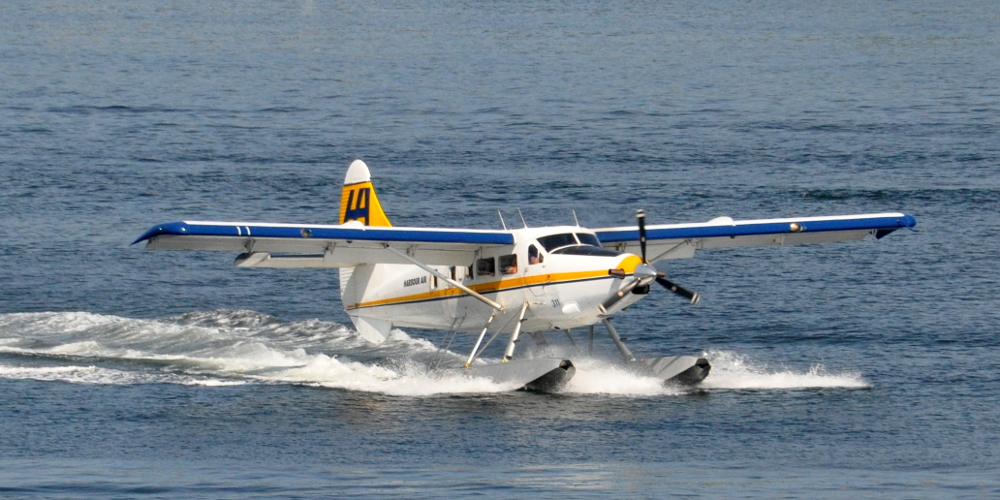
de Havilland Canada DHC-3T Otter, registration C-GLCF, built 1961, serial number 422
Burrard Inlet, Vancouver, Canada, 8 August 2011
DHC-1 Chipmunk | DHC-2 Beaver |
DHC-3 Otter
|




